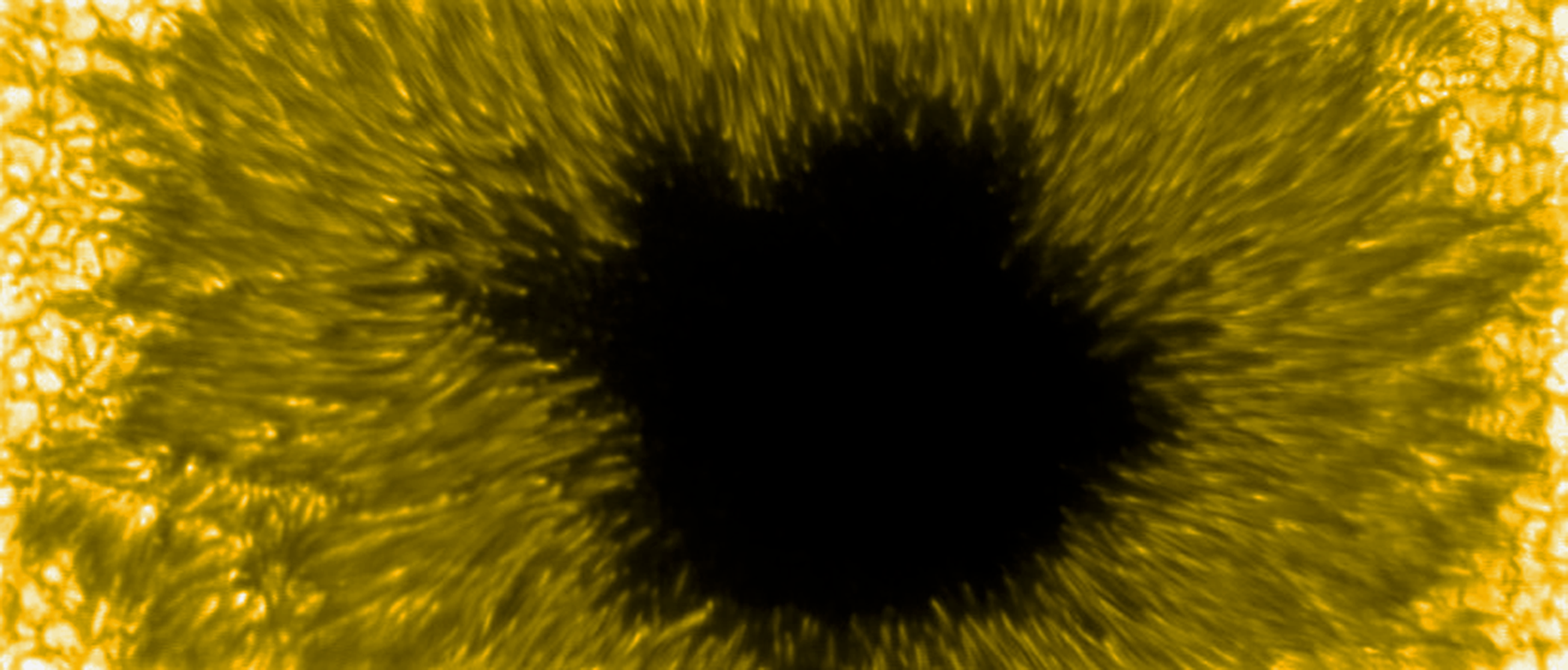Dr. Mariarita Murabito, from INAF Osservatorio Astronomico di Roma, introduces us to penumbral filaments with the help of an image of one of the largest sunspots emerged in the last 20 years. Already curious? Keep reading!
 Sharp view of the solar photosphere obtained on 20 May 2016, 13:53 UT with the spectro-polarimeter IBIS (Fe I 617.3 nm line) at the Dunn Solar Telescope (New Mexico, USA). One can see remarkable details in the large sunspot of active region NOAA 12546 observed near the central meridian. Credit: Murabito et al. (2019) and Stangalini et al. (2018).
Sharp view of the solar photosphere obtained on 20 May 2016, 13:53 UT with the spectro-polarimeter IBIS (Fe I 617.3 nm line) at the Dunn Solar Telescope (New Mexico, USA). One can see remarkable details in the large sunspot of active region NOAA 12546 observed near the central meridian. Credit: Murabito et al. (2019) and Stangalini et al. (2018).
Caused by solar magnetism, sunspots typically consist of a darker, inner region called the umbra, and a lighter region that surrounds it, the penumbra.
Early telescopic observations already showed the filamentary nature of the penumbra. In recent years, observations with state-of-the-art instruments have shown that those filaments are nearly radially aligned around the umbra, and that strong and weak magnetic fields are interlaced with each other along the azimuthal direction. Observations also show that, no matter their position, penumbral filaments exhibit bright heads near the umbra and dark cores along their central axes.
Understanding penumbrae's structure is key to better understand the overall structure of sunspots. Actually, even though the mean magnetic field strength in the penumbra is lower than in the umbra, its larger surface area implies that a significant fraction of the magnetic flux emerges through it. However, penumbra overall structure - and the height stratification of the magnetic field in these regions - is still not fully understood.
The 4-meter European Solar Telescope will allow for higher resolution images and polarimetric accuracy, as well as simultaneous observations of the photosphere and chromosphere. These capabilities are key to fully depict the tridimensional nature of the magnetic field in penumbral regions.
